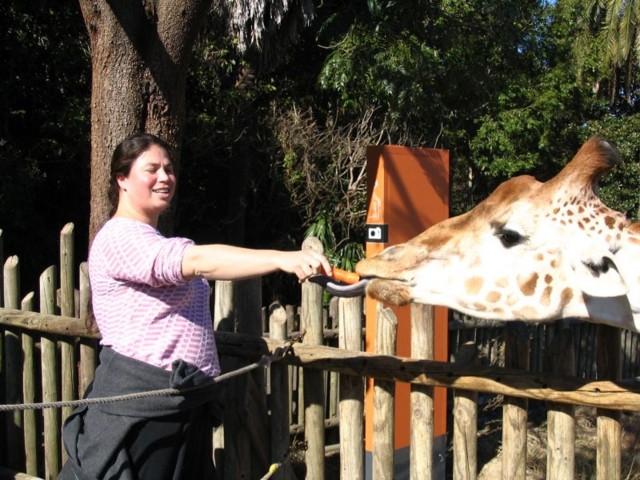
Our flight out from Sydney to Ayer's Rock was on the day following our visit to Dr. Sim and the surprise discovery of Na'ama's pregnancy. We did, however, return to Sydney for two more days at the end of the trip. Sydney was therefore the beginning as well as the end of this set of adventures in Australia.
Chronologically, this page describes the last we saw of Australia, and it is also the last page written on this site. This is quite fitting, considering that it ties in to most other things in the trip:
We came there from Canberra. Our arrival is described as part of the drive. From there we flew to Hong Kong, after two days. On the first day we visited COFA with Na'ama, as described here, but it is the second day that really ties all the loose ends together. On that day we visited Sydney's world-famous Taronga zoo.
This ties in immediately with Singapore, because Singapore's number one tourist attraction is its zoo. This we never saw, due to severe objections from Orit. These objections are partially about allegations of animal cruelty, but mostly about the fact that Orit did not want to see any attraction that is "more of the same", and as we have seen our share of zoos and safaris, that particular attraction was out, and this is a point Orit was very consistent about, whenever we saw advertisements of local zoos.
Most interestingly, the Singapore zoo allows you to hold a baby lion, as well as to feed a grown-up one with your own hands (well, you know what I mean...), and I was sure this bit of trivia will melt Orit's objections away, being as it is that she is fanatic about the species. However, when Orit realized that feeding a mature lion is something that costs an arm and a leg (again, you know what I mean), and that even for feeding a bear and holding a baby lion in your hands they charge a fortune, Orit's stingy gene came up, and the offer was refused.
So, why here? Why now? Why go to Taronga zoo and feed a giraffe?

(An experience about which Orit commented that it was not very nice, because the giraffes have very long, black tongues that were not very appetizing.)
The answer lies with Bev. Bev, a person we met in the bush and then spent much time with in Melbourne, had quite a bit to say about Taronga. She said that she came from Melbourne to Sydney on her honeymoon, and that her visit to Taronga remains an unforgettable experience to her. Personally, I think the standards of honeymoons changed considerably over the years, but as Orit and I are obsessive honeymooners, we couldn't forgo this experience.
We were in Taronga for that entire day, and the Taronga gallery has so many pictures in it, that I decided to split these in two: in addition to the general Taronga gallery, there is a sub-gallery dedicated specifically to a bird show we saw there.
The bird show itself was amazing. It featured a great many birds: large birds, colorful birds, intelligent birds (at some point, a volunteer from the audience was asked to hold up a quarter. A bird then flew up to him, took the quarter from his outstretched hand, and gave it to its trainer. Later, after some jokes about this, the bird took the quarter and returned it to the man's hand). All these birds did spectacular fly-bys over the audience, and, all-in-all, it was a great show.
You will not see much of this in the bird show gallery, because it was photographed with a digital camera with horrendous shutter delay (on a geological time-scale). However, I still think this gallery is worthwhile, due to the beautiful backgrounds of Sydney and the harbour. If you still don't realize that this is the most beautiful city on earth, the gallery is guaranteed to change your mind.
Finally, there is the zoo itself. Here you can find not only animals whose name begins with a VAV (e.g. "wallaby" and "wombat"), but also species not commonly found in Australia (or anywhere else for that matter). This latter list includes a Goliath Stick Insect,
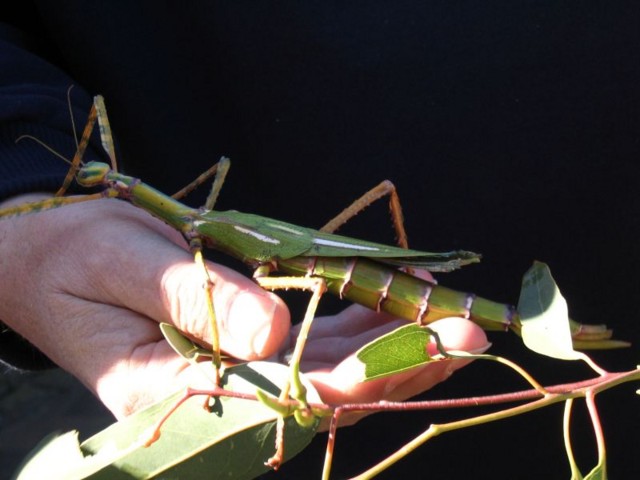
a Komodo Dragon,
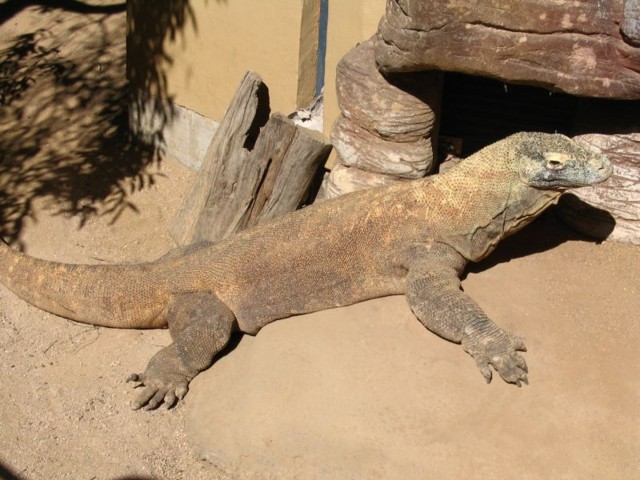
a Meerkat,
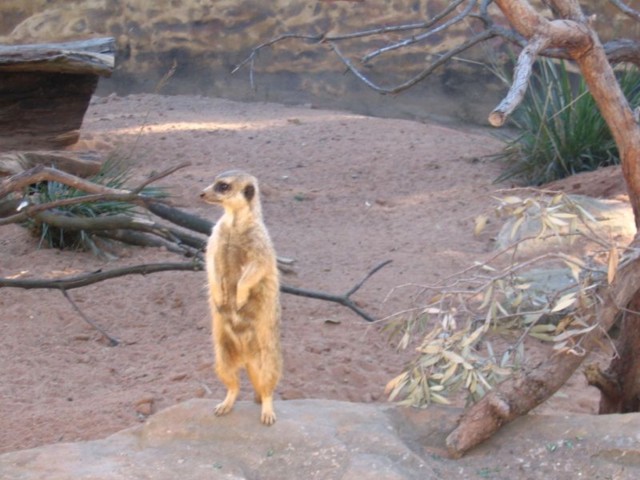
a Red Gold Pheasant
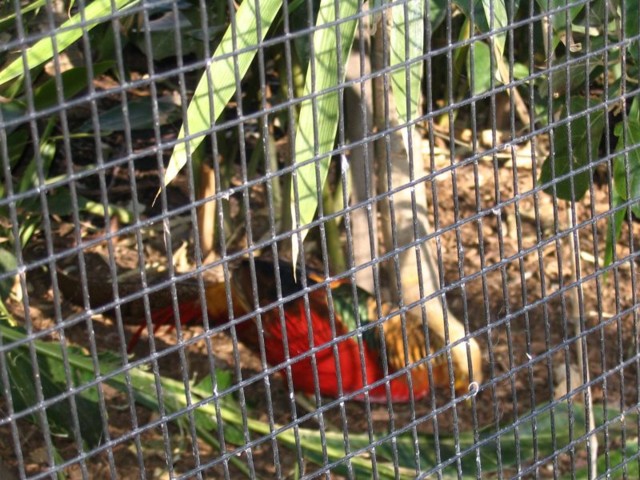
a Tepir,
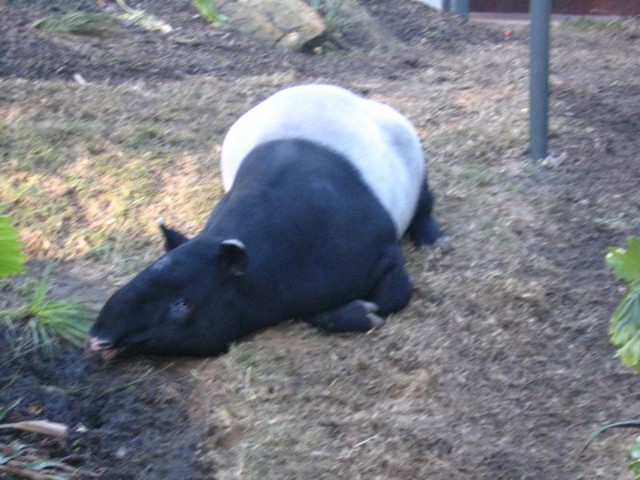
and the world's smallest bear sort.
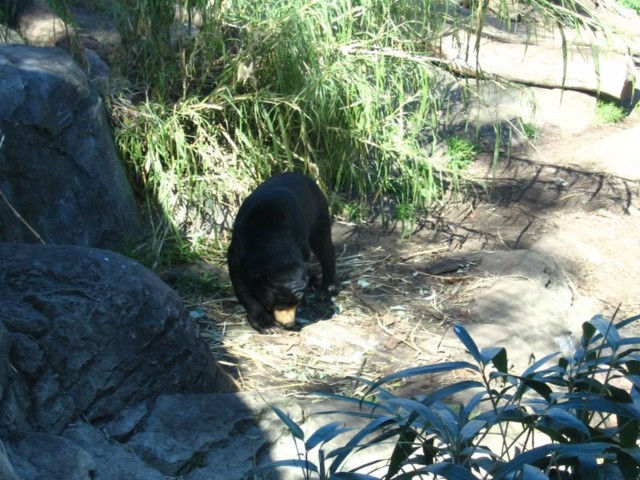
Notably, we have here many pictures of Echidnas,
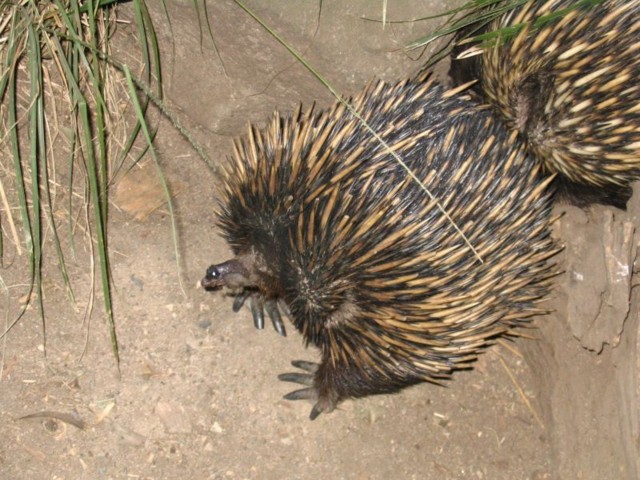
but not a single picture of a Platypus, even though there were plenty of them in every animal exhibit we saw in Australia. Australians are very proud of these two, and even have them on their coins. The story goes like this: the echidna is the closest living relative to the platypus. (Though you wouldn't recognize the familiarity on sight: the platypus looks like a beaver with a beak and lives in streams.) These are the only two species that have survived from an entire evolutionary line, and they are therefore curiosity items to every taxonomist.
Until the first living platypus was brought to Europe, European biologists thought it was a legend, and when a dead one was brought in they thought the carcass was a hoax. Now, you ask yourself, why would they think that?
Well, what would you think, if I told you that the duck-bill platypus is a mammal but lays eggs? That it has fur but lives in water, and, to make matters worse, has the beak of a bird? That it has no natural enemies, but has spurs with a toxin that could easily kill a dog?
And these are just the inconsistencies that can be told from studying a dead specimen. Consider what those same biologists would have made from a live study: the platypus lives and hunts in water. Nevertheless, when it dives it closes its eyes, ears and nose. Allegedly, its beak is sensitive to electrical currents, and that's how it makes do, but when you see them swimming about, it is patently obvious that they have no idea what they're doing: they swim in their own doggy-paddle way, but make sharp u-turns and back-flips every second or so, so there is never any real progress in any direction, and if that's not enough for you, then the platypus has the additional strange habit of burrowing 20 meter-long tunnels, again for no apparent reason.
Like I say: only in Australia.
Anyway, the Taronga gallery has plenty to see and it's highly recommended. Orit never got around to feed a lion, but at least she has some great shots of lions and other cats eating.
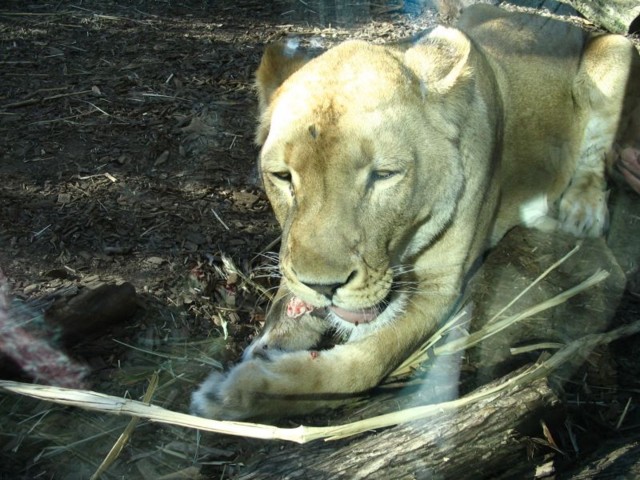
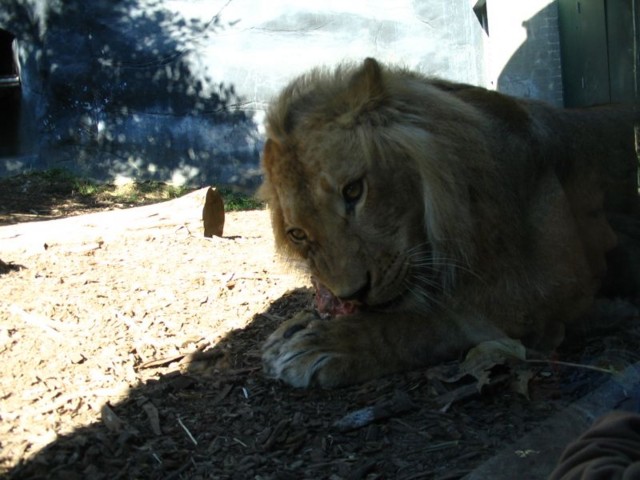
You can tell she was out-of-control when she saw the big cats, and where she lost it completely is when she decided to specialize in ape pornography. (Click on the image if you want to see the video-clip, but be forewarned that this is 10Mb worth of things you'd wish you never saw.)
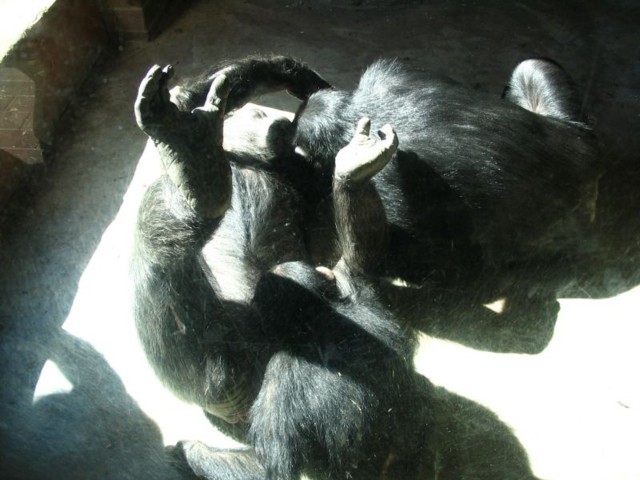
And that was it, really. Thus ended our five-week long stay in Australia. That night Barak and Na'ama invited us to a farewell dinner at a local restaurant called "The Oaks", which we can recommend wholeheartedly. Na'ama and Barak were unsure about inviting us there, because it isn't a "high-class" place, but in Australia, as Orit and I already learned in Canberra, that's actually an advantage. It means that when you order a steak you get a choice between "we cook" (more expensive) and "you cook" (cheaper). We naturally chose the "you cook" option and began preparing our own steaks, which is just plain fun to do, when you are given the proper environment and equipment. I can say that this also changes your outlook on what you're eating. I, for example, who usually eat my steaks charred, found myself taking a bite into what I prepared, finding it to be still completely rare inside, and saying "Ah! just the way I like it!" with the air of complete satisfaction. I guess you have to try it to believe it.
The next morning we packed our bags and headed for the airport. (There awaited us a pleasant surprise regarding the cost of our rental car, but that's a completely different story, for another time.)